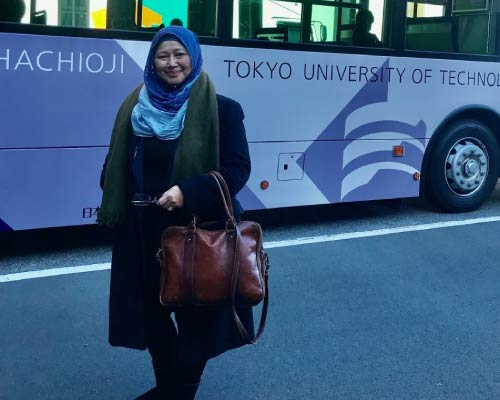Q: Wow! That must have been pretty cool to be funded by the Ministry of Education and Culture to go to Japan! I’m sure you’ve had many fond memories back in the days. Could you share some of them with us?
A: As a student, learning a new culture, a new language, and experiencing a totally new environment was definitely a highlight. Especially since it was in a totally new country! I believe I was able to articulate well too because I was working at 3 different places a week after my classes, really exposing myself to the society and their way of life. Being a Monbusho scholar, I’d normally finish my classes pretty early in the day. So I’d quickly rush off to work once my classes are over.
Now, the work I did wasn’t just to get money. The different work that I went for were all related to my studies. I worked as a set designer for a children’s programme at Fuji TV. Everything back then was hand-drawn and hand-painted. Then, in the later part of the day, I’ll be in another company where people would produce anime production. Every Friday, probably around midnight, I’d be involved as a graphic designer with Tokyu Hands and do different work from being a prop set designer to a classical animator and even colour printing!
That sounds like a lot of work for one person, right? It was but I enjoyed every second of it! I loved obtaining the knowledge from my student life and gaining relevant skills through practising design professionally.
Q: That sounds like a lot of work for one person, right?
A: It was but I enjoyed every second of it! I loved obtaining the knowledge from my student life and gaining relevant skills through practising design professionally.
Q: It seems like you had a huge head start in your professional career. Your working experience as a student in Japan must have helped you tremendously in this field!
A: Definitely! I didn’t come from a rich family when I was studying in University Technology Mara (UiTM) in the 80s so I did many freelancing projects not only to get some experience but also as a means to survive.
Q: What are some of your memorable moments in your professional career?
A: Looking back at my whole working career, one of the most memorable moments would probably be when I was working in advertising as a junior art director. I remember I was holding a Japanese account for a Japanese brand where I had to speak Japanese and meet many celebrities. The best and most interesting part of the experience was when I managed to convince and secure an account with them.
Travelling to various places around the world while attached to the institution I was working at before, like the Middle East, Indonesia, and even Australia, to promote Malaysia as an education hub for Malaysia External Trade Development Corporation (MATRADE) was also an interesting moment in my career.


